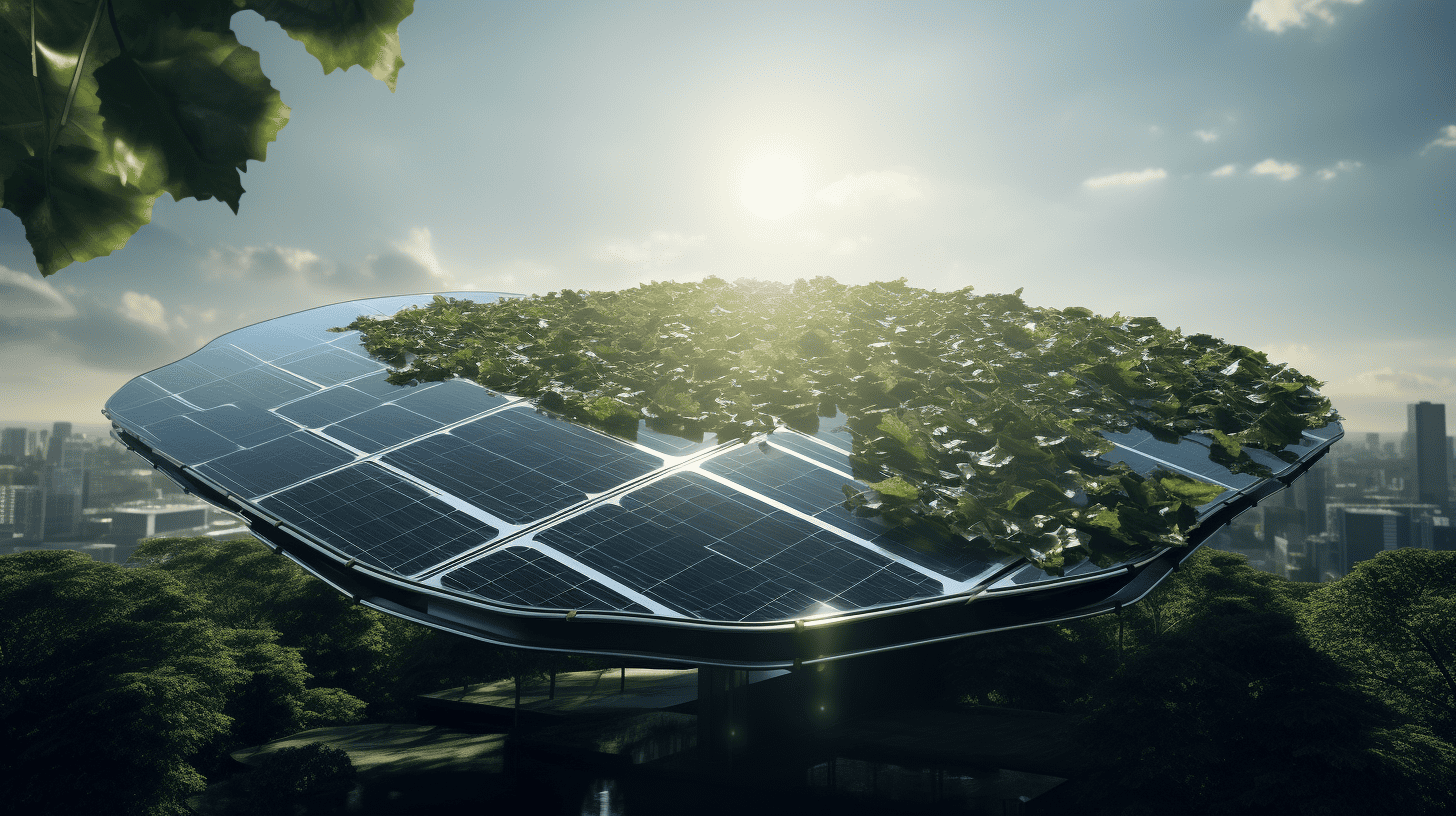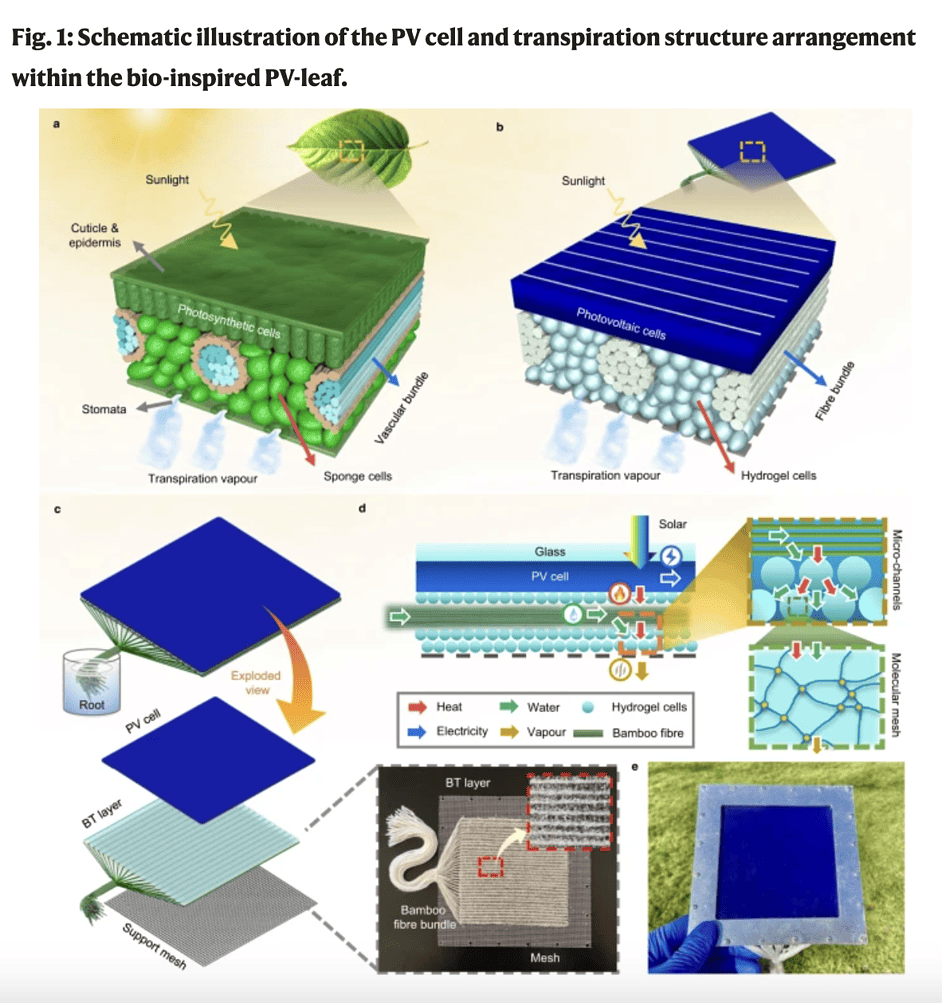
Solar power is accelerating, but photovoltaic (PV) cells convert only a fraction of solar energy into electricity, with the majority wasted as heat. A solution is presented in the newly proposed PV-leaf, a bio-inspired hybrid system that leverages biomimetic transpiration to cool PV cells. This innovative concept reduces the operating temperature by 26°C, enhancing electrical efficiency, and adapts to varying ambient temperatures. The innovation was published in Nature.
- Researchers have developed an innovative ‘PV-leaf’ system that cools solar cells through biomimetic transpiration.
- This multi-energy system also produces heat and clean water.
- Testing showed the PV-leaf outperformed standard solar cells for power conversion efficiency.
Remarkably, the PV-leaf can also utilize saline as a coolant, offering a sustainable solution in regions facing freshwater scarcity. Beyond its cooling capabilities, the PV-leaf concurrently generates electricity, heat, and clean water, significantly boosting solar energy utilization. With its potential to effectively tackle thermal management, energy generation, and water scarcity issues, the PV-leaf represents a major stride in the sustainable and efficient use of solar power.
Unveiling the novel PV-leaf
The PV-leaf, a pioneering concept developed by researchers at Imperial College London, is a multi-energy generation system that takes inspiration from nature. It uses a biomimetic transpiration structure to cool PV cells, a significant departure from conventional PV systems that often suffer from high heat wastage.
At the heart of this groundbreaking technology is a biomimetic transpiration (BT) layer, ingeniously fashioned from bamboo fibers and hydrogel cells. The BT layer passively moves water from a separate tank onto a solar cell, reducing the cell’s operating temperature. This temperature reduction enhances power conversion efficiency, generating more electricity from the same amount of sunlight.
From wasted heat to useful energy
The PV-leaf doesn’t just cool down solar cells; it puts the excess heat to work. Instead of being lost as waste, the heat produces water and thermal energy, making the PV-leaf a multi-generation energy system. This innovative approach to energy generation significantly increases solar utilization efficiency and represents a significant leap in the sustainable use of solar power.
Testing of the PV-leaf demonstrated a power conversion efficiency of 15.0% and a fill factor of 0.77, which outperformed reference standalone PV cells. These results show how the PV-leaf’s innovative cooling mechanism can improve the performance of solar power systems.
Equally Impressive Economic Feasibility
Not only does the PV-leaf perform well, but it also makes economic sense. The additional components required by the PV-leaf, including the BT layer and the water tank, have a capital cost of approximately 1.1 $/m². This represents just 2% of the cost of conventional solar panels. The payback time for these additional components is estimated to be less than half a year.
Furthermore, the PV-leaf concept can be scaled up to more prominent collectors, suggesting it could be applied in real-world projects. The system’s simplicity also adds to its appeal, as it requires no expensive porous materials, pumps, or control units, making it suitable for multi-generation applications and thermal management for PV cells.
A solution for water scarcity
Another standout feature of the PV-leaf is its ability to utilize saline as a coolant. This means the system can function in areas with freshwater scarcity. It also has the potential to generate an additional 1.1 L/h/m² of freshwater under solar irradiance, which could significantly boost water supplies in arid regions.
This feature also makes the PV-leaf particularly suited to hot and dry climates, where it performs better than traditional PV systems. The improved transpiration performance in such conditions could make the PV-leaf a key player in these regions’ transition to renewable energy.


